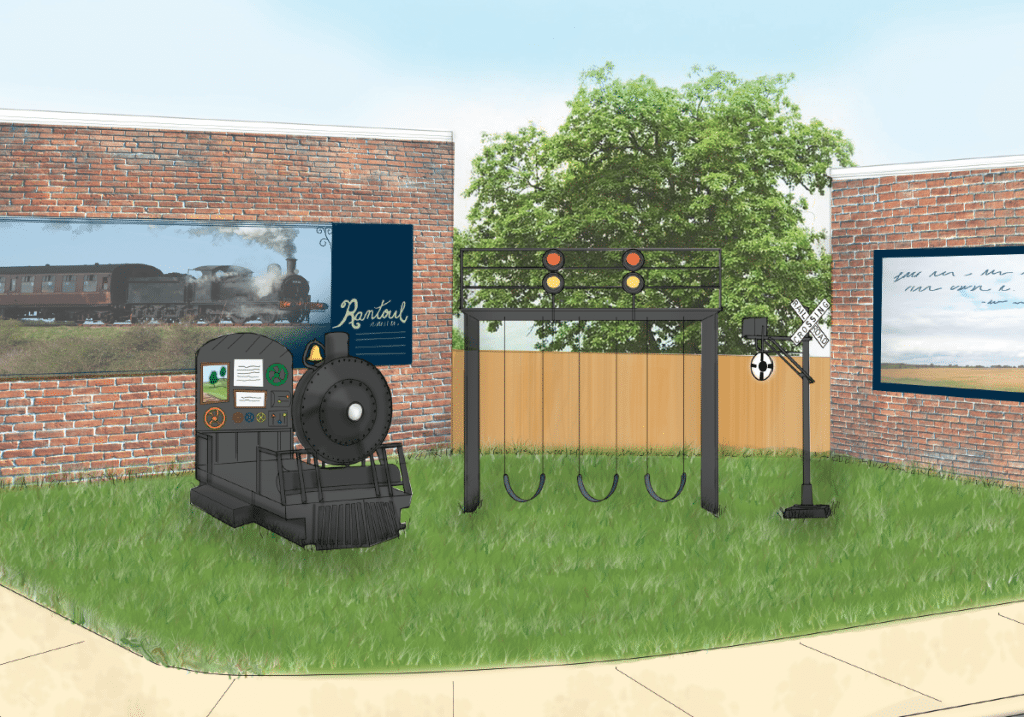Can Your Community Plan to Make Better Use of Parks?
Thursday, June 1, 2017 1:00 PM by Taylor Studios in Design and Planning

Nearly all contemporary community plans emphasize green space and natural areas, including local parks. How can your community plan to get the most bang for their buck with parks? Take advantage of existing spaces, and if you’re ready invest in some enhancements.
There are, of course, oodles of reasons to love parks. For starters, they have demonstrably positive effects on a community’s physical health, quality of life, and property values. (Check out the National Recreation and Park Association’s significant body of research here.)
In fact, if parks aren’t already in the picture, most community plans would very likely propose some. Small pocket parks, for example, are a great way to beautify vacant land and boost community pride for relatively little cost. Here is a themed pocket park concept TSI created for the Village of Rantoul’s Community Experience Plan:

Beyond their own inherent benefits, parks are also great laboratories for developing other community experience initiatives.
Parks are:
Easy to find and well-trafficked – people already know how to get there, and they’re already showing up.
Centers of community activity – parks are regularly used for fitness, play dates, pet companionship and more.
Known and beloved – if there’s one thing most parks DON’T have, it’s a PR problem!
Scenic – trees, open space, and meandering paths are a fitting backdrop for monuments, fountains, memorials, or other potential landmarks that deserve a reverent and beautiful setting.
All of these things make parks ideal for both media-based and event-based placemaking.
Sometimes, implementing events first can help you identify your infrastructure and media needs before investing in something permanent.
TEST IT OUT
For example, let’s say you organize a weekly farmers market in the local park. You need some easily identifiable “market headquarters” where vendors can check in and shoppers can view a directory and map. At first, it is perhaps a pop-up tent flanked by some large feather flags. This temporary setup lets you tweak the placement as needed to improve visibility, traffic, or logistics. Once you have established the location that works best—and gotten a few markets’ worth of revenue under your belt—you can confidently invest in a permanent kiosk and map, knowing they will serve your needs.
Here’s another scenario: imagine you put together a walking tour featuring a dozen or so locations of interest in a swath of downtown surrounding your city green. Where does the route begin? Maybe that’s a good place for an eventual pavilion or podium, from which the tour guide can kick things off. What sequence has the best flow, narratively and logistically? Perhaps some interpretive signage can help unify and enrich the experience. Which stop along the tour is the “halfway” point? You may want to add some benches and water fountains there—maybe even plant a few shade trees.
MIX IT UP
Experimenting with different kinds of events in your outdoor space is also a great way to gauge community interest and help prioritize future infrastructure and media investments. Maybe the local kickball tournament was kind of a flop, but boy-oh-boy, did people show up for music in the park! Instead of permanent bleachers, then, your community might be better served with amphitheater-style seating.
WATCH AND LEARN
Well-attended events also afford planners a valuable opportunity to observe amenity use and telling traffic patterns. Where are people laying out their picnic blankets? Maybe that’s where some tables and trash/recycling receptacles should go. Which stretch of the walking trail sees the most dog-walkers? Maybe there’s a great opportunity for a pet sensory garden or an off-leash dog park. At the very least, you might place more cleanup bag dispensers over there…dog owners and non-dog-owners alike will appreciate that!
No matter how creative, logical and experienced a planner may be, there’s simply no substitute for observing actual human behavior.
After all, public input is the foundation of every successful Community Experience Plans. Events and activities taking place in your parks can be a tremendous opportunity for people to contribute to the conversation – through their actions as well as their words.
Share this on social networks